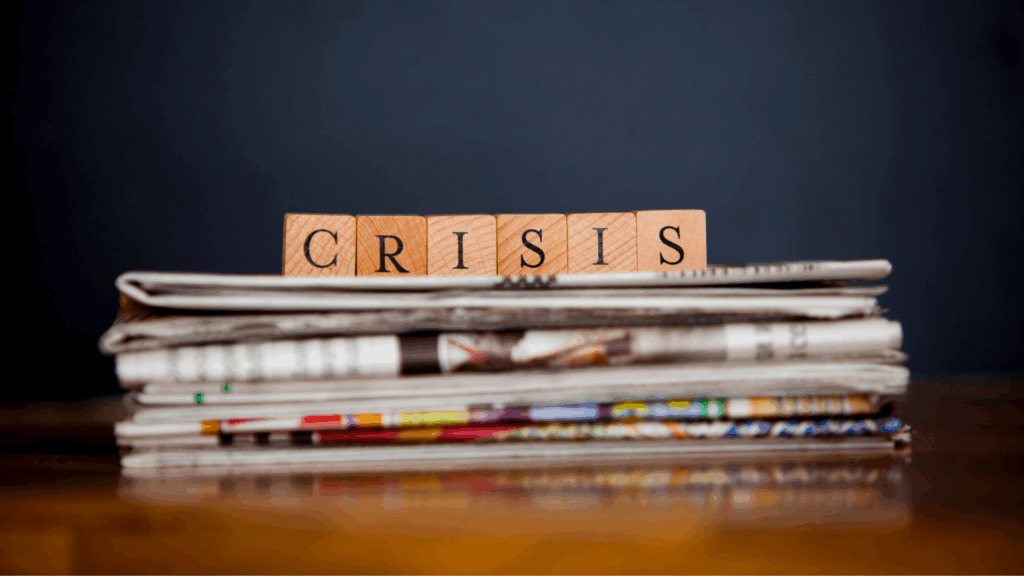In the immediate aftermath of a crisis, the spotlight is bright and the timeline is unforgiving. The decisions made in those early hours shape public perception and set the tone for what comes next.
Strong crisis communication doesn’t begin at the breaking point. It’s built on preparation, alignment and audience understanding. When a crisis hits, how your organization responds and communicates has a lasting impact.
At Ghidotti, we’ve helped organizations under intense pressure. Crisis response shouldn’t be a scramble. When approached strategically, it becomes an opportunity to reinforce your identity and lead with intention.
 If the Moment Demands Change, Don’t Waste It
If the Moment Demands Change, Don’t Waste It
Crisis often reveals what wasn’t working: broken processes, communication gaps or places where brand values didn’t show up in practice.
The instinct is to clean it up and move on. But strong leaders pause and ask: Can we do things better?
A public relations partner can help assess the root issue by prompting thoughts:
- What are people reacting to?
- Where is trust breaking down?
- Which changes matter most?
The most effective responses go beyond a statement. They drive operational adjustments, culture shifts or more proactive engagement strategies because the organization is willing to lead with real change.
Use the Spotlight to Clarify, Not Just Contain
During a crisis, communication shifts into reaction mode, and messaging moves quickly to manage confusion. But when handled with intention, these moments can reinforce who you are and how your organization leads under pressure.
Misalignment — where leadership says one thing and frontline teams say another — creates confusion and casts doubt on your ability to manage the situation.
Internal messaging should be consistent so employees feel confident in the direction taken. Spokespeople should be prepared to represent the organization publicly, while others understand how to support the crisis response.
Even small improvements, such as naming a spokesperson or aligning talking points, can strengthen your response and restore trust, a top driver of brand influence according to PRGN’s 2024 Influence Insights Global Survey.
Going Quiet Isn’t the Same as Moving Forward
While it’s tempting to cease communication after the initial shock of a crisis — especially when the team is depleted and headlines are dying down — silence rarely provides clarity. Instead, it breeds skepticism about the presence of genuine action.
Audiences don’t expect every answer, but they do expect follow-through. A brief update or sign of progress can offer reassurance and prevent uncertainty from filling the gap.
Here, intention matters more than frequency. Keeping communication steady signals accountability and helps maintain the credibility built during the initial response.
Build the Habits That Will Make the Next Crisis Response Easier
Every crisis leaves lessons. The question is whether your organization takes time to examine what happened and build from it.
Instead of rushing ahead, reflect on how decisions were made, how communication flowed and where pressure points emerged. That clarity guides smarter preparation.
Ask the questions that matter:
- What went well?
- Where were the bottlenecks?
- What systems or protocols can be improved for next time?
Tools like message vetting, scenario planning or a streamlined contact map can bring clarity when quick decisions are needed. It just takes discipline to pause, evaluate and adjust while the experience is still fresh.
If You Haven’t Faced a Crisis Yet
You don’t need to be in a crisis to benefit from crisis communications thinking. Small steps now can mean the difference between scrambling and leading.
Here are a few ways to prepare:
- Audit your website and social channels. Social media is the channel with the highest impact on brand influence; would your content hold up under scrutiny in a tough moment?
- Clarify internal decision paths. Who approves messaging? Who talks to stakeholders or the press?
- Run a low-stakes scenario. Choose a realistic situation — like a service disruption — and walk through your process.
- Draft flexible message templates. Simple outlines for basic needs (apology, update, clarification) can save time.
- Designate and media-train a spokesperson. A calm, clear voice can be the difference between diffusing tension and escalating it.
A communications agency can support these steps by helping you build systems and instincts tailored to your culture. They also offer outside perspective, helping you communicate in ways that preserve trust when it matters most.
Key Takeaways
Crisis moments test every system. They challenge your messaging, values and ability to adapt. Effective crisis responses rely on preparation, clear roles and a thoughtful understanding of who your audiences are and what they need in a high-stakes moment.
Whether navigating a challenge, reflecting on the past or preparing for the future, a strategic communications partner can help you lead with clarity and confidence.
When handled well, crisis communications becomes more than a response plan. It becomes a catalyst for connection, credibility and long-term strength.
Let’s treat it that way.